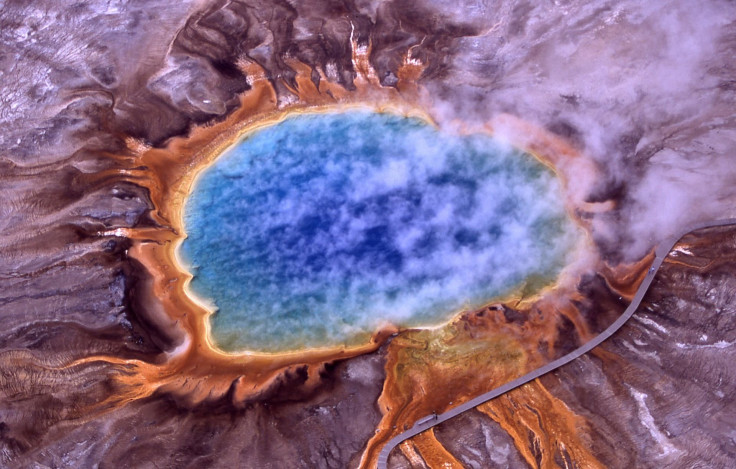Will Yellowstone Erupt? Geologists Look For Supervolcano’s Heat Source

The Yellowstone volcano is a complicated system that is hard to predict, but scientists are getting closer to understanding the source of its heat.
A team of researchers says the supervolcano doesn’t conform to a common idea: that a plume of magma below the surface delivers the heat necessary to spur volcanic activity. They were using computer simulations to see how the geology of the western United States may have evolved over the last 20 million years and found “little support for the traditional mantle plume hypothesis,” according to the University of Illinois. Instead, their simulations suggest that a lot of factors are at play, including tectonic activity on the western U.S. coast.
As the university points out, volcanism often comes about in places where there is a lot of heat due to one tectonic plate in the Earth’s crust squeezing underneath another, a process known as subduction. This process can also drive natural disasters like earthquakes and tsunamis. Yellowstone, however, is too far from the kind of active subduction zones one would find on the coast. That’s where the mantle plume theory has come in, although it may not stick around for long.
Scientists haven’t completely hammered out the details of volcanism in the western part of the country because of “the lack of a clear understanding of the mantle dynamics during this volcanic history,” the researchers wrote in their study, published in the journal Nature Geoscience. The new investigation sheds some light on the mechanics: “According to our models, the putative Yellowstone plume contributes little to the formation of the Yellowstone volcanic province.”
The computer simulations did not show a mantle plume rising to the surface.
“It appears that the mantle plume under the western U.S. is sinking deeper into the earth through time, which seems counterintuitive,” geologist Lijun Liu said in the Illinois statement.
The researchers point instead to tectonic activity on the coast of the Pacific Northwest.
“Eventually, we hope to consider the chemical data from the volcanic rocks in our model,” researcher Quan Zhou said in the statement. “That will help us further constrain the source of the magma because rocks from deep mantle plumes and near-surface tectonic plates could have different chemistries.”
Although it sheds some light on what’s going on within the Earth, the research does not speak to when the Yellowstone supervolcano might next erupt. Some scientists have speculated that it is due to explode, and there have been signs of activity below the surface.
© Copyright IBTimes 2024. All rights reserved.




















